May
24
2017

The lens of the Yashica Micro Finess is a 33mm f3.5 triplet nothing fancy just functional. The first triplet lenses date all the way back to 1893 and are considered the simplest lens that can correct most aberations. I haven’t been able to find much other information about this camera. One magazine from the time suggested that it had similar specifications to the T4 although with the Triplet lens rather than the Zeiss Tessar of the T4. This does seem plausible when you consider that it can accommodate film DX coding from 50-3200 which was unusual for an inexpensive camera at that time. Whatever it might borrow from Yashica’s parts bin it is ultimately a middle of the road camera with a middle of the road wide-angle lens. As is often the case I used severely expired Kodak 400 in this camera.
no comments | posted in Cameras, Photography
May
20
2017

The APS film format was short lived thankfully so despite the often inventive designs of some of the cameras there are just as many boring offerings. The Minolta Vectis 10 is one of these. It has a 25-50mm f4.8-9.1 lens and what must be one of the most limiting shutter speed ranges of 1/90 sec to 1/200 sec. Even though it uses the smaller APS film format the camera itself is as large or larger than many contemporary 35mm film cameras. It’s around the same size as the Yashica T4 zoom for example. I would describe it as being chunky. The viewfinder is a tiny little thing that’s easy to miss when bringing the camera up to your eye. Without many redeeming qualities and with better camera options to use the dwindling supply of APS film in the Minolta Vectis 10 is not worth bothering with.
no comments | posted in Cameras, Photography
May
6
2017

Some images from a camera that has always served me well. While it is a sturdy enough camera the thing that hampers the X700 from being one of the great manual focus SLR’s of all time is its use of a plastic body. At the time the Canon New F1, the Nikon F3 and the Pentax LX were made of sturdy metals the X700 felt cheap and I guess that’s why it was comparatively affordable. The use of plastic aside the exposure system and functionality were top notch. The top shutter speed of 1/1000 is also somewhat limiting although not an uncommon top speed for SLRs of the time.
no comments | posted in Cameras, Photography
Apr
22
2017
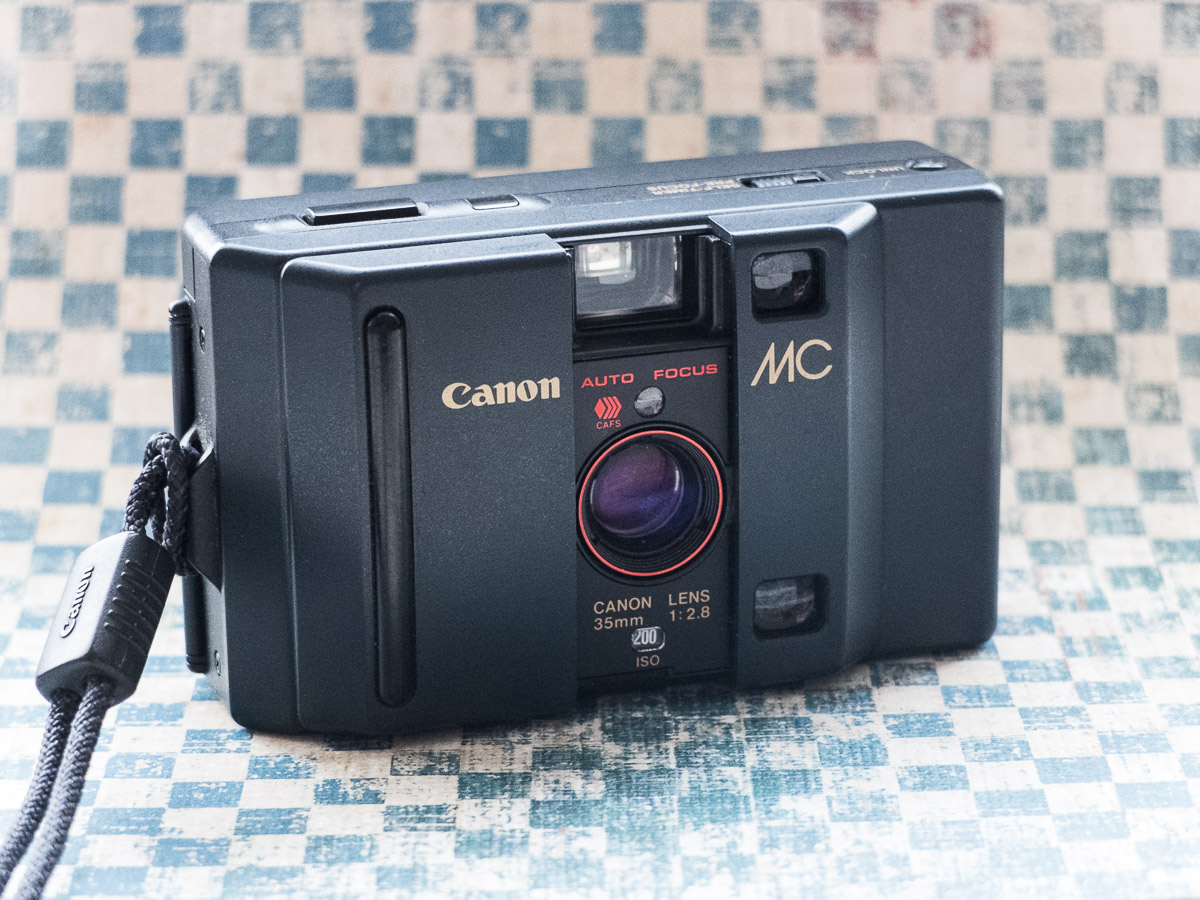
The Canon MC (MC stands for Micro Compact) is on the small side at 4.25″ x 2.5″ x 1.625″. One of the ways that it achieves this small size is by placing the two infrared autofocus modules in a vertical arrangement. They are uncovered along with the lens when you slide the lens cover open which also turns the camera on. An additional way size is kept down is by using AAA batteries for power. (Lithium batteries were only just starting to be used around the mid 1980’s)
The lens is a 35mm f2.8 made from 4 elements the rear element being a molded plastic aspherical one.
The shutter itself is electro mechanical which allows settings between 1/8 and 1/500 second. If the exposure system deems that there isn’t enough light for a proper exposure it flashes a red LED in the viewfinder to suggest that you use flash. The flash is a detachable unit that mounts on the side of the camera and is also powered by two of its own AAA batteries
A common way that many cameras achieve pre-focus and recompose is to allow a half press of the shutter button before fully pressing it and taking the picture. The Canon MC takes an entirely different approach. There is a (Self-Timer Pre-Focus) switch on the top of the camera and by sliding this to the left and then fully depressing the shutter the autofocus system is activated and set without tripping the shutter then a second press of the shutter button will trip the shutter using the previously set autofocus. Here is the kicker though you need to do that before the self timer goes off and takes a picture anyway. It does give you 10 seconds and that 10 seconds doesn’t start until you release the shutter button when setting the focus. So in practical terms you could set the focus and hold down the button until you are ready to take the picture and then release and re-press. The actual tripping of the shutter is extremely quiet but then the thundering film advance happens sounding a lot like some injured animal.
I found the camera to be a capable performer in most cases and with its small size and angular design it achieves a level of fun that’s hard to explain. While it’s a cumbersome process you can use the Canon MC in a silent way which I will describe here.
1. Slide the Pre-Focus switch to the left
2. Press and hold the shutter button to set focus
3. Wait for the moment you want to take the picture
4. Release and repress the shutter to take the picture KEEPING the shutter button pressed
5. Wait until an opportune moment to release the shutter button again to advance the film and mask the noise, a moment such as a jet taking off or a stuck car horn.
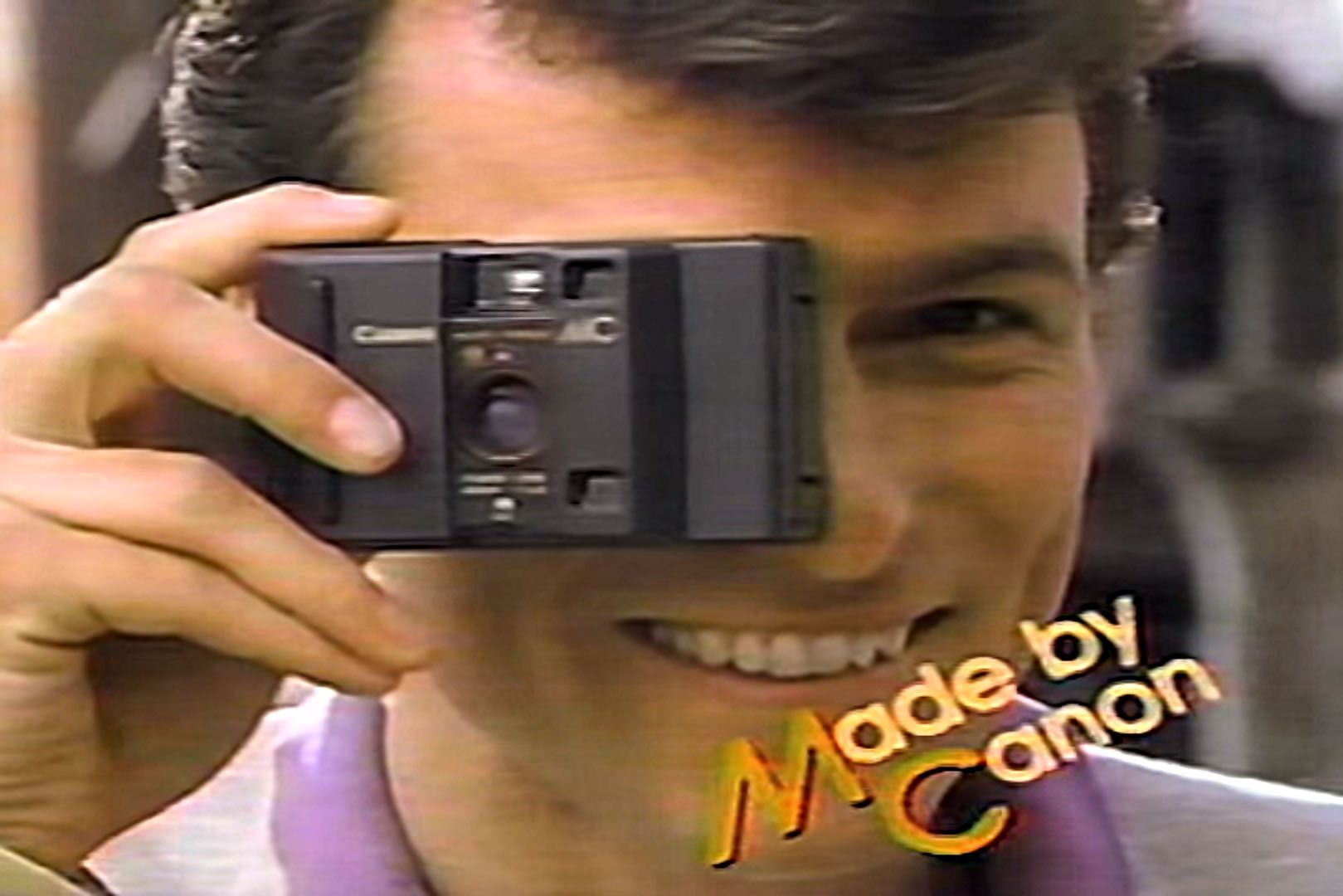
1 comment | posted in Cameras, Photography
Apr
9
2017

What can one say about such a utilitarian camera, other than it just works. It’s that just working that made it so popular as a photography teaching tool. Additionally it’s completely mechanical controls mean that it can be used without batteries and it’s rugged metal build make it a survivor. My first encounter with the K1000 was to take pictures of a CRT screen from a pipe inspection system. At the time ( I used a Minolta X700 personally) it seemed ridiculously simple but it always worked.
In fact I don’t recall coming across any that haven’t worked in some manner no matter how beat up they looked. That being said they can develop shutter issues as with this unit. It seems like the shutter at 1/1000 is in need of some adjustment as it left one side of some images slightly darkened. There is plenty of information on the web about the history and use of this camera so I won’t rehash what’s already there but I will say that with all the developments in the arena of digital photography one thing that is missing in my opinion are cameras that embody the nature of the K1000. There are cameras that take styling cues from the past but not many of them strip down the photography experience to just dialing in settings and taking pictures.
1 comment | posted in Cameras, Photography, Uncategorized
Apr
5
2017
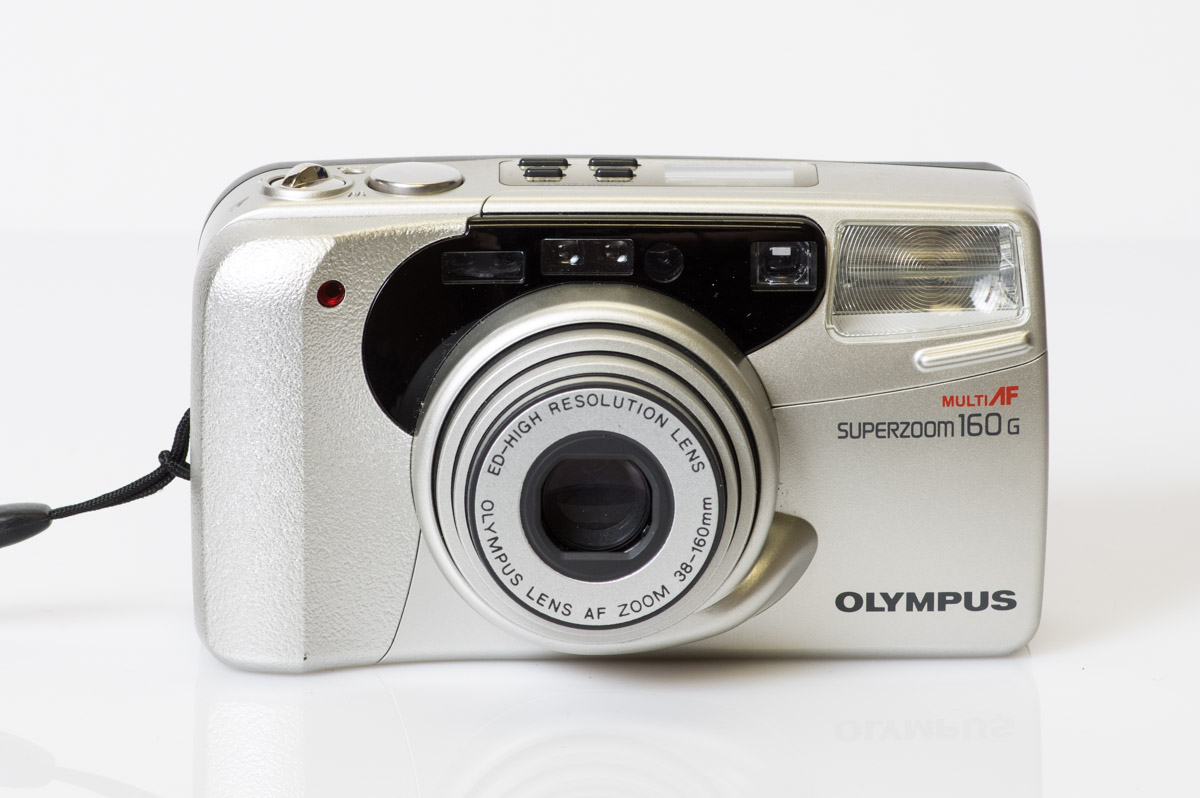
There aren’t that many film point and shoots that tried to achieve this level of zoom. At 38-160mm the 4.2X zoom lens required 10 elements in 8 groups with an Extra low dispersion element in addition to aspherical and hybrid elements (as per Olympus). The result of that reach though is an anemic f5.7 to f12.3 aperture across its zoom range. That final one is a speed that is more than 3 times slower than f4. To put that in perspective if you had an SLR with a 200mm f4 lens (a somewhat relative comparison) and were able to take a picture at a shutter speed of 1/250 second then the SuperZoom 160 would use what amounts to a shaky shutter speed under 1/30 of a second. Right there is one reason so many people had so much trouble getting good results with these long zoom point and shoots. The manufacturers kept increasing the zoom because that’s what sold but the photographic results did not improve. With care, use of a tripod and a self timer, you can get decent results. Although it defeats the purpose of a point and shoot and doesn’t seem worth the effort.
4 comments | posted in Cameras, Photography
Mar
25
2017

The super A is a heavy camera at 810 grams and that is without the lightmeter on top which weighs an additional 135 grams. The shutter ranges from 1 to 1/400 sec however the 1/400 second setting is nearly hidden on the dial and is not available when using the light meter. It does have interchangeable lenses, I only have the one 50mm f2 which is a reasonable performer even wide open. The other lenses are quite rare. The 50mm f2.0 provides a smooth out of focus area often referred to as bokeh just outside of the area of focus but distant out of focus areas are quite nervous looking. This look is distinct from what you get from modern lenses. Its effect can be seen best in the image of the railroad.

The apertures are set at definitive click stops and at f5.6 and f8 produce an interesting aperture shape that looks like a 10 pointed star.

no comments | posted in Cameras, Photography, Uncategorized
Mar
19
2017
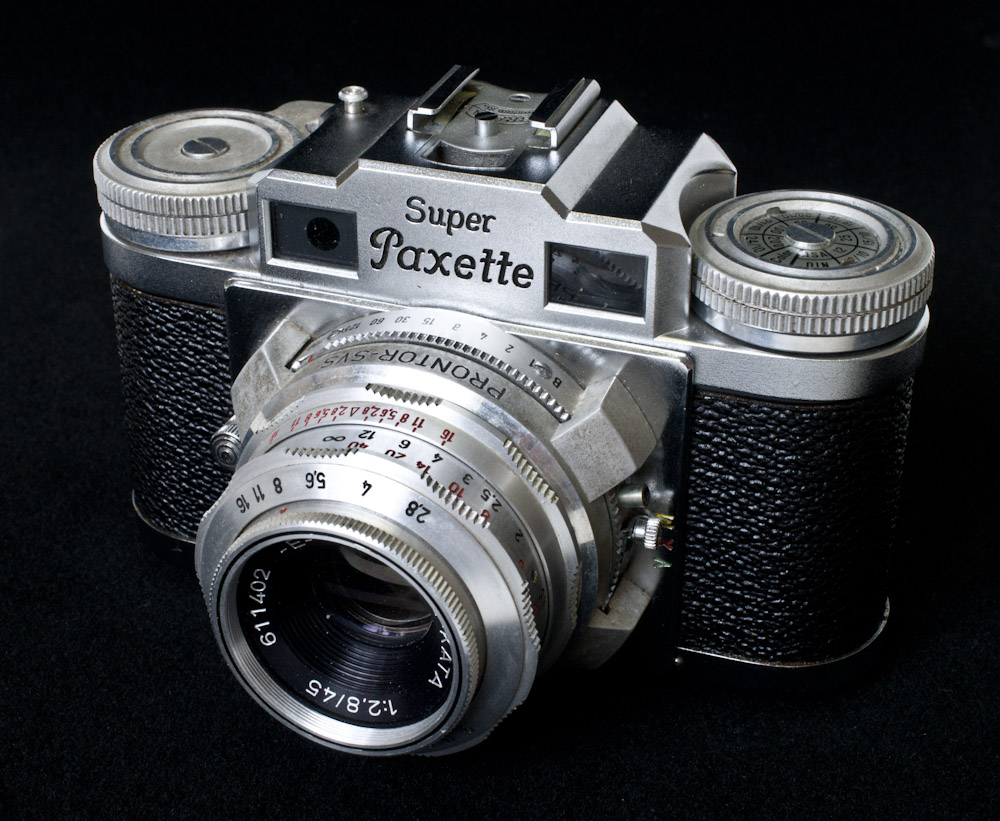
Some images from my Braun Super Paxette using Kodak Gold film. Once again (Let the light shine on you) I opened the back of the camera before fully rewinding the film. Its always a risk that your going to lose what would otherwise have been a good image but on the other hand there is something about the act of exposing film in this way and inserting another degree of randomness to the process. Seeing images effected in this way is a reminder of the underlying process of image making and that the images themselves are merely a representation of reality.
1 comment | posted in Cameras, Photography
Mar
10
2017
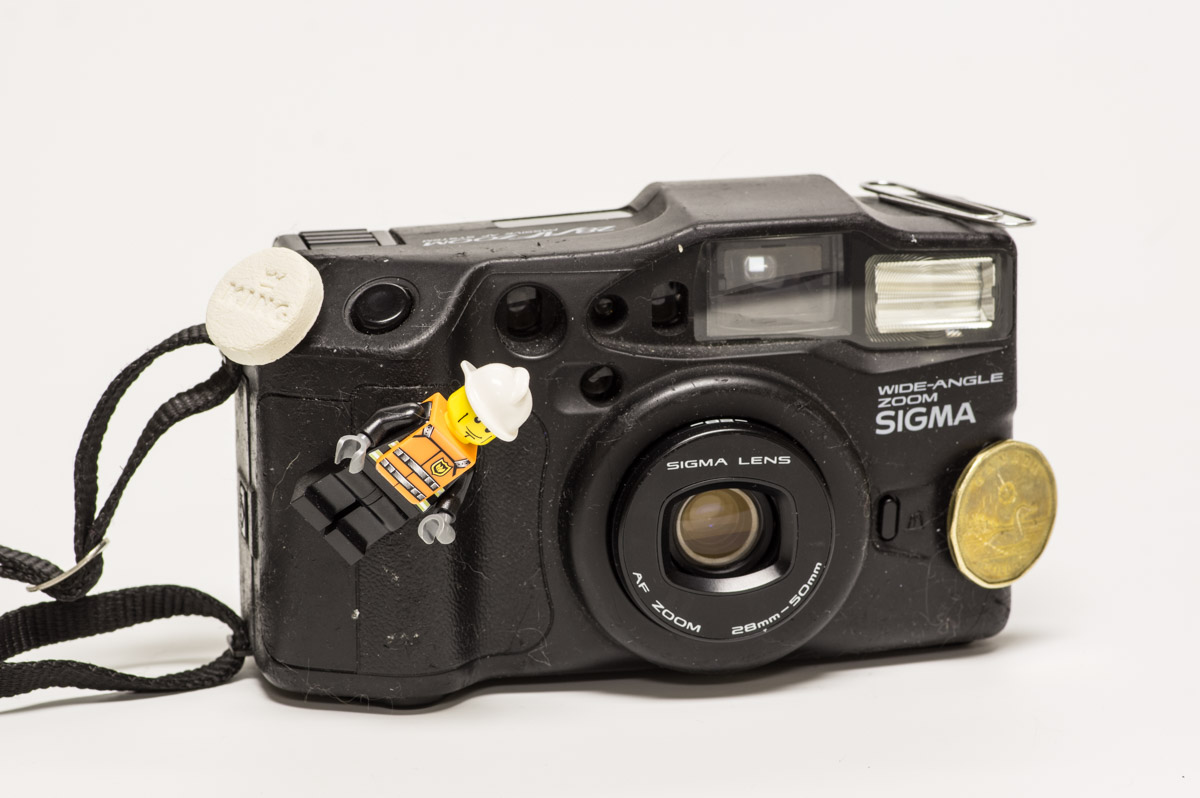
I love this little bit of advertising copy Sigma gave about the 28 AF Zoom and its siblings.
Sigma gives its cameras a touch, exclusive “ZEN” finish which is not only scratch-resistant but is also non-reflective and non-slip. The “ZEN” finish will retain its looks almost forever: your Sigma camera will always look as new even after many years of faithful service.
Every one of these cameras that I have happened across has had a defining attribute, they are sticky. They didn’t start out that way of course but over time whatever that “ZEN” material is it has turned into a gummy mess that will pick up anything loose it comes into contact with. The lens on the AF 28 Zoom goes from 28mm to 50mm or 1.78X which isn’t that impressive, but I do like 28mm. To fill out your focal lengths Sigma also offered the AF Super Zoom 70 that had a 35-70mm lens and the AF Super Zoom 100 with its 50-100mm zoom. That way you could have 3 cameras stuck together.
The Sigma 28AF Zoom lens provides apertures of f4.2-f7 across the zoom range but with a high level of vignetting. Lets face it the camera is as ugly as the images it produces and using it leaves you with a feeling that soap just doesn’t seem to be able to wash away.
One thing about one camera: Despite being an automatic exposure, autofocus point and shoot the Sigma 28 AF Zoom has an external flash shoe that works with almost any flash whether its sticky or not.
no comments | posted in Cameras, Photography, Uncategorized
Feb
26
2017
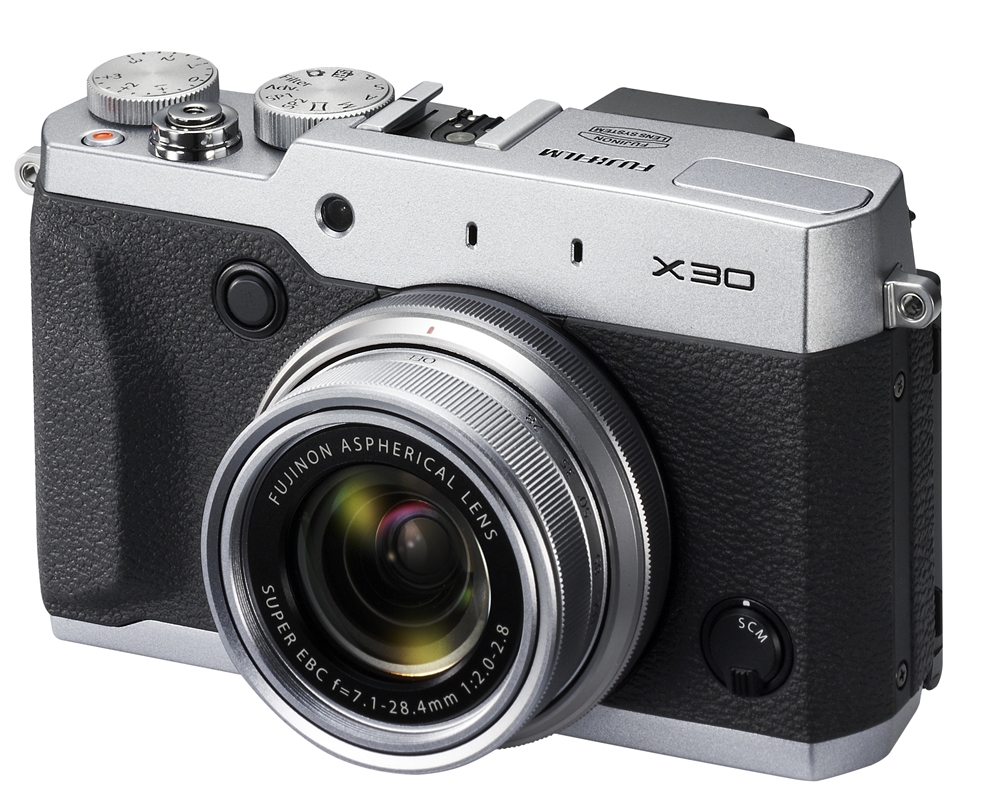
In 2016 I had an opportunity to take a fantastic trip to Paris and London and really wanted a small point and shoot camera that was up to the task. My previous camera that would have fit this bill was the Nikon P7000 but it’s getting old for a digital camera and resets itself every time the battery is removed. As well sensor technology has also improved in the interim primarily in low light. I wont go through all the choices I considered but the Fujifilm X30 was only ever an outside consideration as I was looking at the newly released Panasonic Z100 and the Sony RX100 IV both of which cost more than $1000. By chance however the local camera store (actually a pharmacy and the last camera outlet standing) was having a small camera show with representatives from different manufacturers and dealers. Among these was Fujifilm with some wonderful new cameras and lenses as well as the X30 which was approaching 2 years old and being discontinued. In addition it had the same lens and sensor and processor as the previous model the X20 making the camera seem a little dated. But then there was the price when all was said and done it cost only about 1/3 of the Sony. So aside from the price what other feature would prompt me to forgo buying the best camera I could afford? Well there is the form factor, it’s a nice camera to hold and with all the external dials its easy to use without the need to hunt through menus. 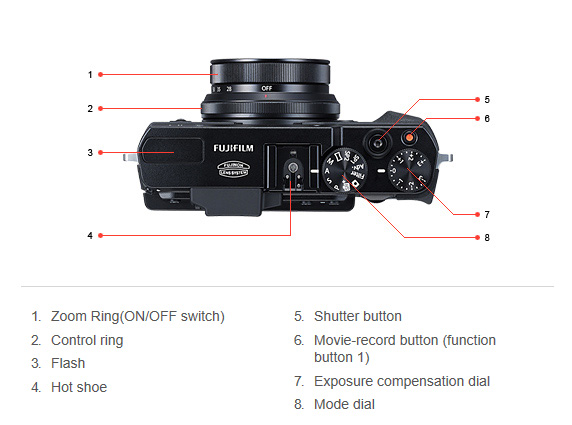 And the 2.360K-dot OLED viewfinder. I’ve never liked EVFs but when I looked through this one I had to admit that it was very good and is a pleasure to use.
And the 2.360K-dot OLED viewfinder. I’ve never liked EVFs but when I looked through this one I had to admit that it was very good and is a pleasure to use. 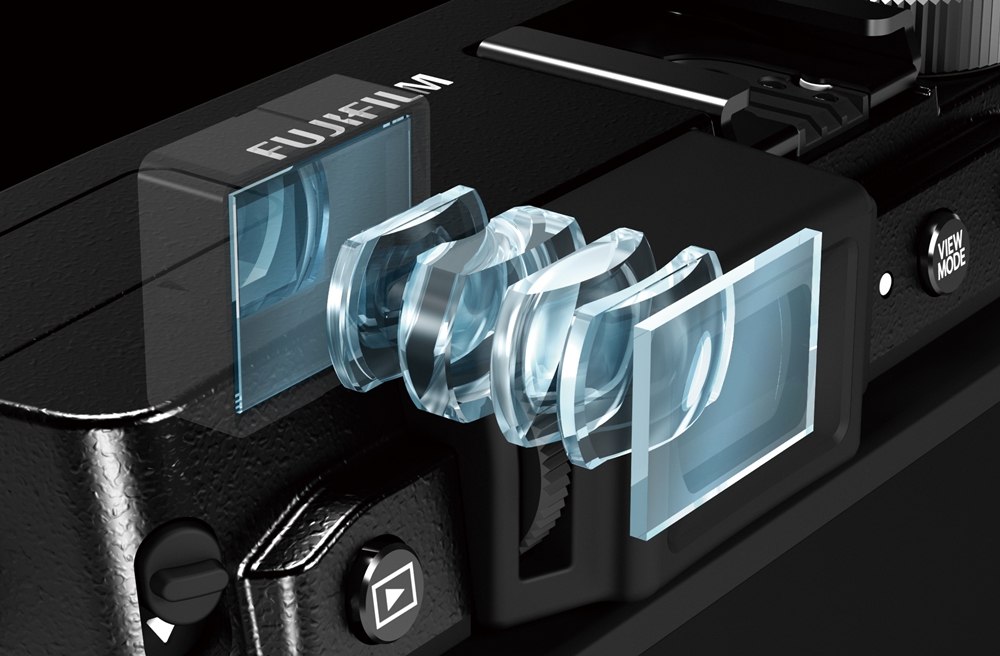 It is large and clear and provides useful information and most importantly for me it did not suffer from lag in low light. In fact Fujifilm claims that the refresh rate is 0.005 of a second. I find that if I pan and the image doesn’t refresh fast enough it causes mild nausea which is not conducive to enjoying photography, one of the main reasons I prefer optical viewfinders. But the X30 viewfinder excels I’m not going to list off the features and specifications of the X30 those are easily found online but rather try to explain where the camera excels and where it does not.
It is large and clear and provides useful information and most importantly for me it did not suffer from lag in low light. In fact Fujifilm claims that the refresh rate is 0.005 of a second. I find that if I pan and the image doesn’t refresh fast enough it causes mild nausea which is not conducive to enjoying photography, one of the main reasons I prefer optical viewfinders. But the X30 viewfinder excels I’m not going to list off the features and specifications of the X30 those are easily found online but rather try to explain where the camera excels and where it does not.
The first thing to be addressed is its ISO range and in particular noise at higher settings. I ran a few tests and as expected it was not a particularly good performer at higher ISO settings. Here is a crop from one test comparing ISO 100 to ISO 800.

So during this testing I determined that ISO 1600 was the upper limit that I was comfortable using to achieve results that I could live with but that limiting it to under ISO 800 was preferable. This is not state of the art territory but it’s also not like you can not take pictures at those values especially given the X30 lenses F2.0-f2.8 maximum aperture.
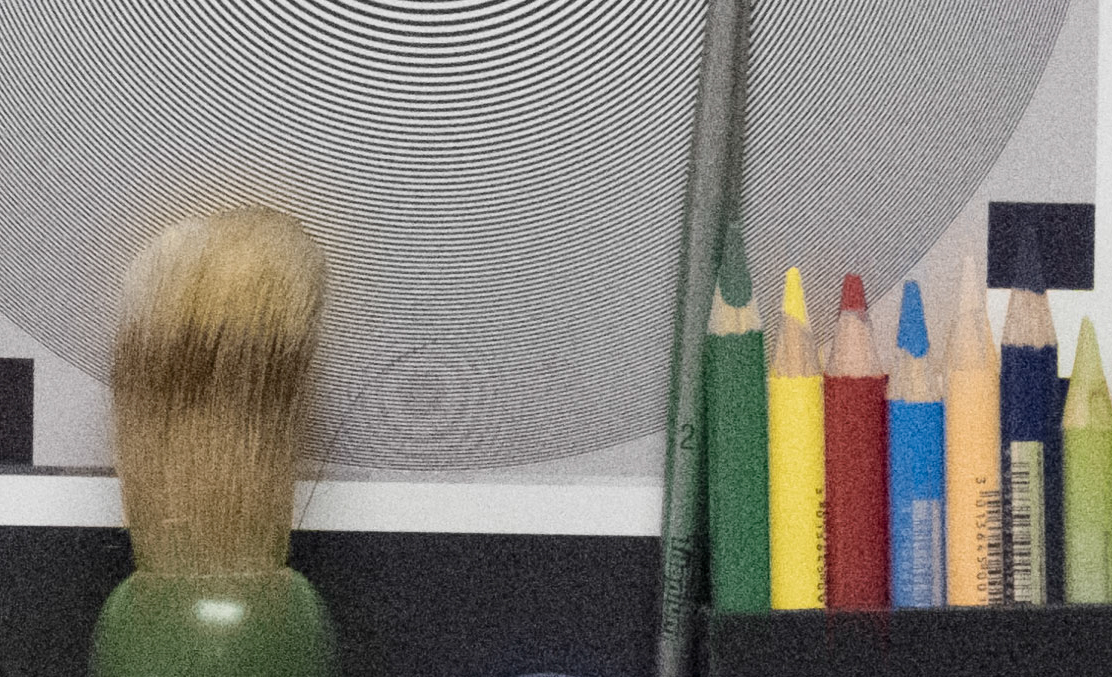
For reference this is what a 100% crop at 3200 ISO looks like without noise reduction. Not useable for me.
The focal range of the lens 7.1-28.4mm yields an angle of view for its sensor that is equivalent to 28-112mm in 35mm terms. While I like 28mm and use it often it would have been nice to have a somewhat wider lens such as 24mm.
Over the next little while I used the X30 when ever I could in order to see how well it performed. What I found was that it was a well laid out camera with good autofocus that produced nice images, what more can you expect. Well larger files such as 20mpixel rather than 12mpixel would be nice and better low light performance would be good. However if you stay within the boundaries of where the X30 works well it is a good all around point and shoot. The X30 also excels at close focus photography as well allowing images taken as close as 1cm to the lens in ‘Super Macro’ mode.  One other minor issue was the movie record button, I find myself hitting it inadvertently far too often ending up with useless short video clips and sometimes a missed photograph. It wasn’t the only digital camera I took and I tended to only use it when traveling as light as possible such as inside museums, a place where it isn’t the strongest.
One other minor issue was the movie record button, I find myself hitting it inadvertently far too often ending up with useless short video clips and sometimes a missed photograph. It wasn’t the only digital camera I took and I tended to only use it when traveling as light as possible such as inside museums, a place where it isn’t the strongest.
Fuji has discontinued the X30 as I mentioned and the have not signaled that there will be a replacement. Nikon has also decided to stop development of their DL series of compacts before they ever made it to market. The point and shoot camera market is practically dead and even the high end compact market which the X30 sat in is limited with Sony and Panasonic dominating that segment with a few exceptions.
What follows are some images from prior to my trip as I tested the Fuji X30 in an other post I will share some of the images from the trip.
no comments | posted in Cameras, Photography, Uncategorized





















































































































































































































